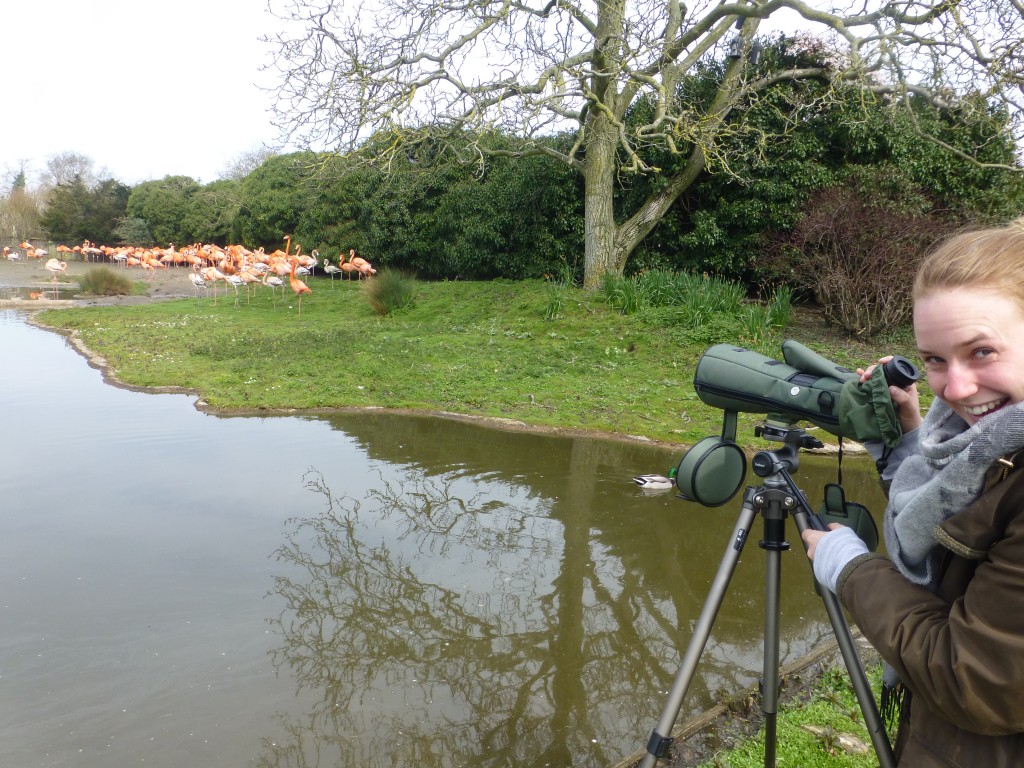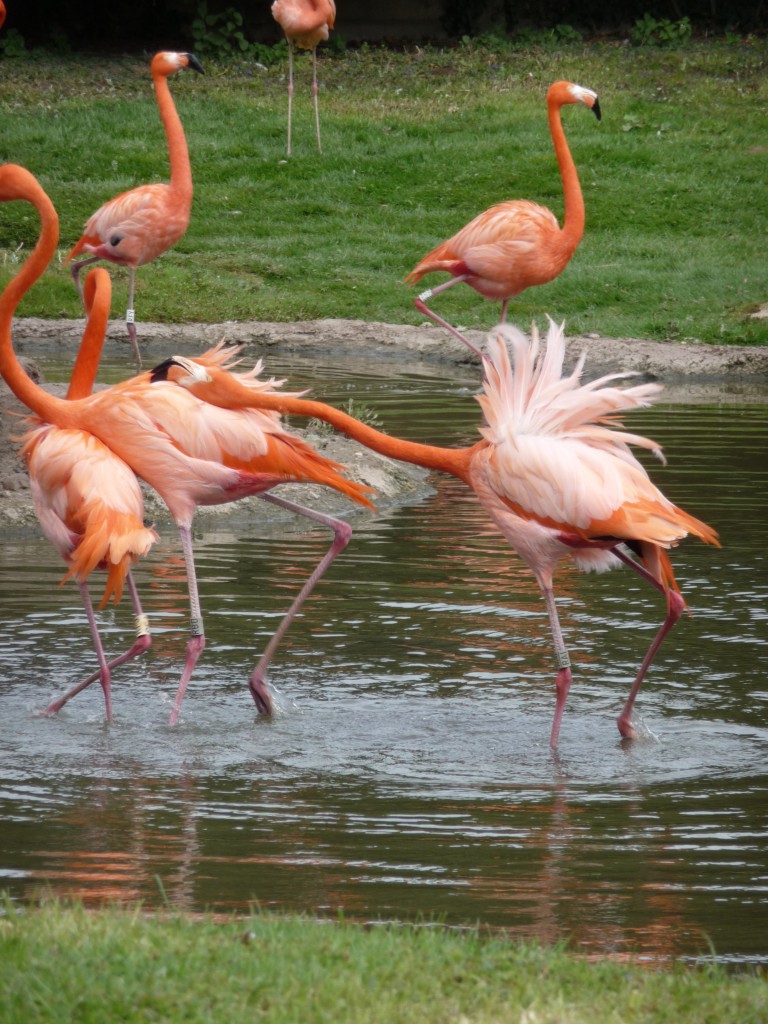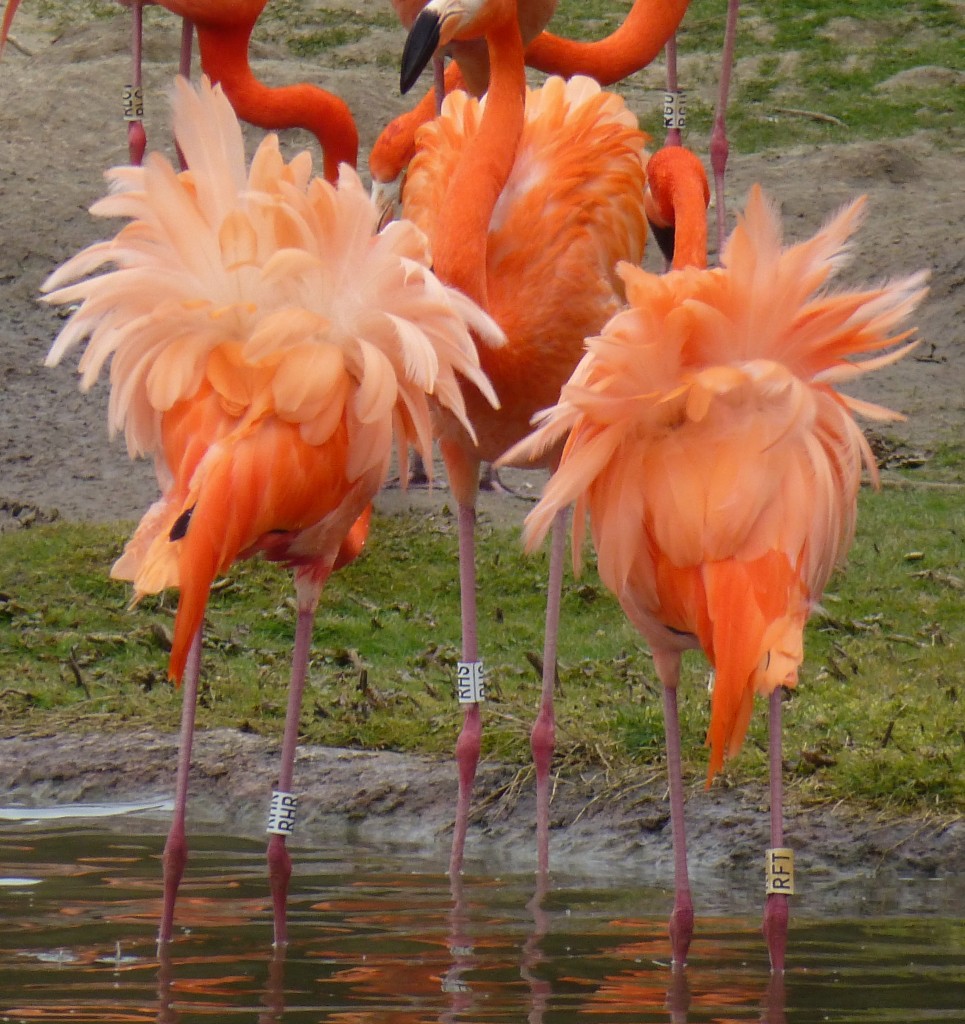Flamingo projects 2016 part 1.
We have a new set of MSc students at WWT Slimbridge this spring and summer who are investigating the behaviour of the flamingos, and I thought I would take this opportunity to introduce them (and their projects) to you over the course of the next few diary posts. All three students, Jess, Imogen and Beth, are studying Animal Behaviour at the University of Exeter and they are each attempting to answer a specific question relating to the activities of the flamingos at Slimbridge.
Starting off with Jess, who is spending her time with the Caribbean flamingo flock and who is looking at specific interactions between birds. Last year, I wrote a paper describing various weird and wonderful social behaviours that I have observed in the flamingos that I have been watching for my PhD (if you're interested, you can find it here: http://wildfowl.wwt.org.uk/index.php/wildfowl/article/view/2629). I was unsure as to why some of these behaviours were occurring and what they actually meant. Jess is taking this paper and collecting data on how and why these social interactions between individual flamingos occur, to answer the question of what they may mean.

For example, why are some birds more aggressive than others? And why do they discriminate between who they like to push and shove around? There's debate surrounding hierarchy in a flamingo flock. Is there a pecking order between individual birds? Are some birds more likely to be dominant over others? Do some birds have more of an influence over the behaviour of others? As in the photo below. Some authors say there is a defined pecking order, and each bird knows its place. Others say that flamingos did not evolve to actively defend resources so therefore they cannot have any form of hierarchy in their flocks. So why, in some instances, can one flamingo see off two others who, if they worked together, could stand their ground? It seems that the flamingo flock is a rather complex society. What we observe at Slimbridge provides very useful information towards our understanding of the biology of the flamingo, and hence gives yet more value to the flamingos in the collections at WWT.

However, flamingos will work together to see off a rival. And mate guarding (where a male bird will defend his chosen female) seems to occur in these flocks. Each flamingo seems to know which birds that he or se can push around, and which ones to avoid confrontation with. The bonds between birds help alliances to form and these will affect the balance of power (if you like) that exist in different sections of the flock. You can see this in the photo below; a male flamingo (left) and a female (right) work together to drive off another male (centre back). So the mate guarding behaviour works because of the bond between the two birds that have paired up. Jess is monitoring and recording interactions between flamingos to look for any patterns or trends in how the birds decide who to engage with, or not. This type of work is not really possible in the wild as flamingos are not likely to have rings on or be in close proximity to researchers for long enough to follow over the long-term.

To give you an idea of the social decisions that flamingos make when they are interacting in their groups, there is a short clip below. This flock of greater flamingos is foraging along the edge of the pool. Some birds push and shove into other individuals around them, but they ignore other birds in the same group. I have seen this consistently in flocks of all six flamingo species. This "bumping" behaviour looks like it is suggestive a hierarchy in a flamingo flock, and birds make choices based on who they can displace, remove from, a valued resource (such as food, as in the case in the video).
What will Jess find out about shoving, pushing and bumping flamingos, with their aggression to some but not to all? I will relay the results of her research towards the end of the year. In the mean time, all of you avid flamingo followers, you now have some new and different flamingo behaviours to look out for on your next visit. Watch out for "bumping" birds. It can be quite funny when you see it!



